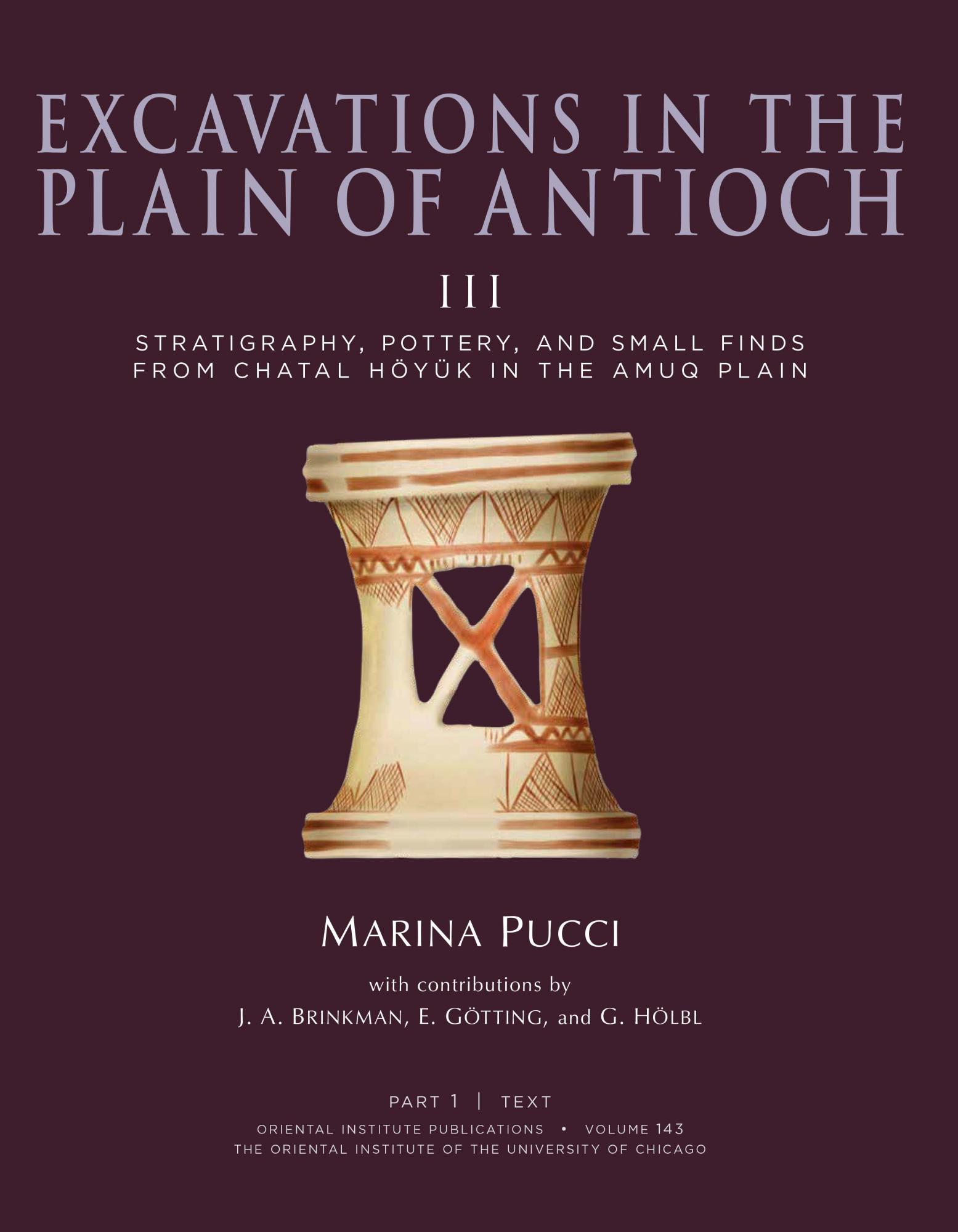Marina Pucci
These volumes present the final report of the four archaeological campaigns carried out by the Oriental Institute at the site of Chatal Höyük in the Amuq (currently Hatay, Turkey) under the directorship of Ian McEwan and Robert Braidwood, more than eighty years after their field operations. The excavation’s documents (daily journals, original drawings, photos, lists of objects, and letters) stored in the Oriental Institute Archives, as well as the approximately 13,000 small finds and pottery sherds from the site currently kept at the Oriental Institute Museum, provided the necessary dataset for the analysis presented here. This dataset allowed the author to reconstruct the life of a village which survived the political turmoil in the period from the Late Bronze Age to the end of the Iron Age (16th–6th centuries BC). If Chatal Höyük was during the Late Bronze Age a village in the provincial part of a large empire (Hittite), it became a large independent town in a small but powerful new political entity (Walistin) during the Iron Age I and II, before being conquered by the Assyrian Empire.
In this extended publication of small finds and pottery, many previously unpublished materials are made available to both general readers and scholars for the first time. The material culture discussed and analyzed here offers the chance to trace changes and continuity in the site’s domestic activities, to point out shifts in cultural contacts over a long period of time, and to monitor the construction of a new community identity.
Table of Contents, part 1 (text)
List of Tables
List of Figures
Preface (James F. Osborne)
Acknowledgments
Bibliography
CHAPTER 1. History of the Excavations, Research, and Materials
CHAPTER 2. Methods of Reanalysis
CHAPTER 3. Area I: Stratigraphy and Related Materials
CHAPTER 4. Area II: Stratigraphy and Related Materials
CHAPTER 5. Area IVa: Stratigraphy and Related Materials
CHAPTER 6. Area V: Stratigraphy and Related Materials
CHAPTER 7. Caches and Specific Features in the Trenches
CHAPTER 8. The Amuq Phases at Chatal Höyük: Pottery Classes and Chronology
CHAPTER 9. Containers: Functional Classification and Morphology
CHAPTER 10. Armors and Weapons
CHAPTER 11. Dress and Personal Accessories
CHAPTER 12. Furniture and Fittings
CHAPTER 13. Toys and Games
CHAPTER 14. Tools and Equipment
CHAPTER 15. Miscellaneous (Unknown Function)
CHAPTER 16. Urban Space and Material Culture as a Mirror for Social and Political Changes
Appendix 1. The Cuneiform Tablet (John A. Brinkman)
Appendix 2. The Neo-Babylonian Amulet (Eva Götting)
Appendix 3. Aegyptiaca from the Mound at Chatal Höyük (Günther Hölbl)
APPENDIX 4. Materials from the Oriental Institute Museum Archives
Türkçe Özet (translated by Oya Topçuoğlu)
ملخّص (translated by Ibrahim Ahmad)
Table of Contents, part 2 (catalog & plates)
List of Plates
Introduction
Catalog
Plate
- Oriental Institute Publications 143
- Chicago: The Oriental Institute, 2019
- ISBN 978-1-614910-46-6
- Part 1: pp. lxiv + 336; Part 2: pp. xiv + 570
- 125 figures (many color); 198 plates (many color); 7 tables
- Hardback, 9 x 11.75 in
- $99.95 (includes both part 1 [text] and part 2 [catalog & plates])
For an up to date list of all Oriental Institute publications available online see:
And see the Chronological Lists of OI Publications










 Stumble It!
Stumble It!

No comments:
Post a Comment